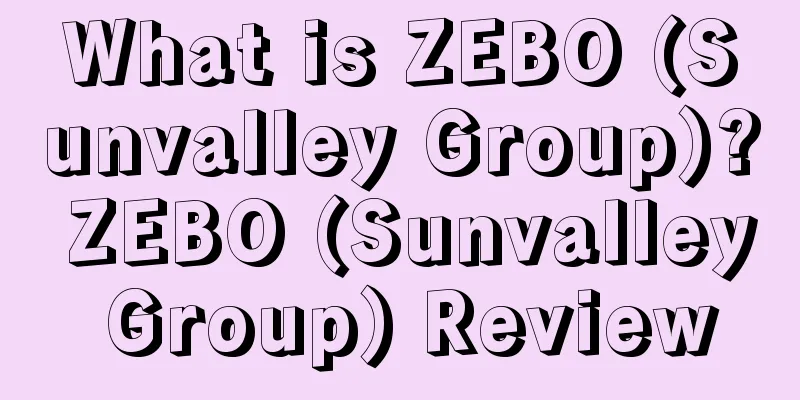New requirements for warehouse distribution! Amazon's new shipping rules are about to take effect!

|
In two days, Amazon’s “new FBA warehouse rules” will officially take effect! Starting from February 20, Amazon will make new adjustments to the FBA warehousing configuration, especially for the delivery of standard-size goods, and sellers’ operating space has become smaller again! Last year, Amazon launched a warehouse configuration service. The US FBA added a new warehouse configuration service fee. According to previous regulations, sellers have three inventory configuration options: 1. Minimum shipment split : sent to the least number of storage locations (usually 1 location), with higher fees; 2. Partial shipment splitting: sending to some warehousing locations (usually 2 or 3 locations), lower cost; 3. The optimal warehousing locations recommended by Amazon , usually 4 or more locations, free of charge. Now, Amazon has made new adjustments to the warehouse configuration service: Starting from February 20, 2025, the "partial shipment split" option for standard-size products will be cancelled and integrated into two warehousing options : " Amazon optimized shipment split " and " minimum shipment split ". What are the two modes of “ Amazon optimized shipment split ” and “ minimum shipment split ”? 1. [Amazon optimized shipment splitting ] That is, if the seller can pack at least 5 identical cartons or pallets and send them to multiple Amazon US operation centers, there is no need to pay the warehousing configuration service fee. To qualify for Amazon's optimized shipping option and waive shipping fees , your shipment must meet the following criteria: 1. Each product (SKU) contains at least 5 identical cartons or pallets. 2. Each carton or pallet must contain the same combination of products, and the quantity of each product in each carton or pallet must be the same. 2. [ Minimum Shipment Split ]
It is worth noting that the shipping method for large and bulky items (such as large furniture, home appliances, etc.) has not changed. Sellers can still select the warehousing area (West US, Central US or East US) for "minimum shipment split". At the same time, the "partial shipment split" option for large items will continue to be retained. The new regulations are about to come into effect , and many sellers have reported that subsequent delivery work is becoming more difficult compared to the past . Previously : "Amazon optimized shipment splitting", products may be sent to 4 locations Now : At least 5 locations, more warehouses, less control over delivery time, and overall shipping costs may increase For sellers who cannot meet the "Amazon optimized shipment splitting" conditions, if the shipment warehouse appointment fails, it may also result in additional warehousing configuration service fees , and the operating costs will increase. Previously, a seller encountered a situation where there were 5 warehouses, and the 5th batch of goods failed to be delivered to the warehouse and was delayed by 4 days, resulting in the last batch of goods entering the warehouse more than 30 days apart from the first batch of goods, and was forced to pay the warehousing defect fee! At the same time, the complexity of inventory management for sellers has increased, and stocking in multiple warehouses requires more accurate sales forecasts, so the risk of unsold products tilts towards sellers . As the new regulations are about to take effect, sellers are advised to start cost calculations, compare the differences between the existing warehouse costs and the two models after the policy, and complete the adjustment of the logistics structure. In order to avoid the uncertainty, warehousing configuration and defect fees caused by the split warehouse, sellers can choose to prepare inventory in overseas warehouses in advance and use the "transit replenishment" model to balance the risk of out-of-stock in the split warehouse. |
<<: Amazon has another new feature that allows sellers to direct traffic to independent sites!
>>: Compliance upgrade, invalid payment account...Amazon crisis breaks out!
Recommend
eMarketer predicts: US social e-commerce will reach 79.64 billion US dollars in 2025!
It is learned that social e-commerce is currently ...
In addition to products, buyers often search for this information
Years of user experience testing have shown that u...
What is WEBUY? WEBUY Review
WEBUY was founded in 2019 by Vincent Xue, co-found...
What is Papaya Orange? Papaya Orange Review
Papaya Orange is a comprehensive SaaS product of B...
Hundreds of containers were detained! Another large freight forwarder is suspected of bankruptcy!
It is learned that in April this year, Amazon Euro...
What is Gojek? Gojek Review
Gojek is a shared mobility service provider based ...
Sellers are being fleeced again! Amazon's own operations are grabbing traffic, will the shipping rate increase 20 times?
▶ Video account attention cross-border navigation ...
What is InstaFollow? InstaFollow Review
InstaFollow is a mobile app for Instagram. Its mai...
What is AsinSeed? AsinSeed Review
ASINSeed is a keyword analysis software for the Am...
What is Upmesh? Upmesh Review
Upmesh was originally created to help merchants au...
The "pandemic economy" has great potential! US online retail sales for the 2021 holiday season will reach $218 billion!
According to Deloitte's annual holiday retail ...
The number of cross-border online shopping packages by Argentine consumers has increased 2.7 times!
<span data-shimo-docs="[[20,"获悉,根据虚拟储物柜平台P...
What is Helium 10? Helium 10 Review
The Helium 10 software suite includes more than a ...
What is Sorftime? Sorftime Review
As a brand of FilTime, a global online data soluti...
The United States released the 2022 "Notorious Market" list! Many Chinese companies were named
It is learned that on January 31, the Office of th...









